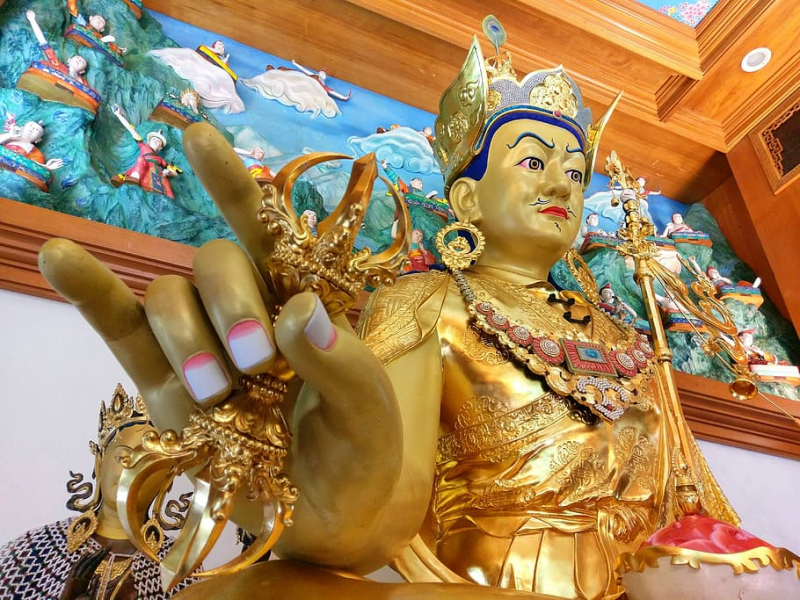The Vajra Guru Mantra
Sanskrit: Om Ah Hum Vajra Guru Padma Siddhi Hum - Om Ah Hum Benza Guru Pema Siddhi Hum
The Vajra Guru mantra is a sacred and powerful chant in Tibetan Buddhism, dedicated to Guru Padmasambhava, also known as Guru Rinpoche. Guru Padmasambhava is a revered figure who played a crucial role in establishing Buddhism in Tibet. The mantra is believed to hold profound meanings and offer various benefits to its practitioners.
Meaning of the Vajra Guru mantra: the mantra signifies the invocation of Guru Padmasambhava's wisdom, compassion, and enlightened presence to guide and bless practitioners on their spiritual path.
- "Om": Represents the universal sound and the essence of enlightened body, speech, and mind.
- "Ah": Symbolizes the wisdom of Guru Padmasambhava, which is beyond ordinary understanding.
- "Hum": Represents the indivisible nature of wisdom and compassion.
- "Vajra Guru": Refers to Guru Padmasambhava, whose name translates to "Vajra Guru," symbolizing his unshakable and enlightened nature.
- "Padma": Refers to the lotus, symbolizing purity and spiritual realization.
- "Siddhi": Represents spiritual attainment or accomplishment.
In Tibetan Buddhism, chanting "Om Ah Hum Vajra Guru Padma Siddhi Hum" has many benefits. The mantra invokes Guru Padmasambhava's wisdom and compassion to bless and guide practitioners. Reciting it purifies negative karma, turning afflictions into virtues and bringing inner serenity. The mantra shields against barriers and harmful effects. This ancient chant connects practitioners to Guru Padmasambhava and his lineage, helping them progress spiritually. Enlightenment and Guru Padmasambhava's guidance are available to anyone who chant the Vajra Guru mantra regularly.
















